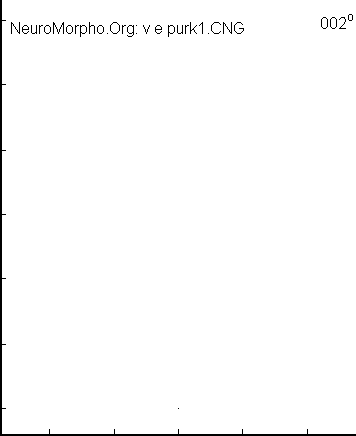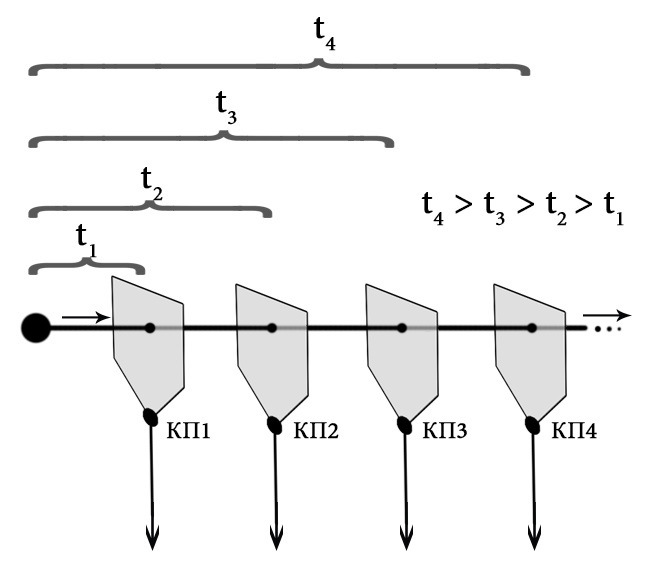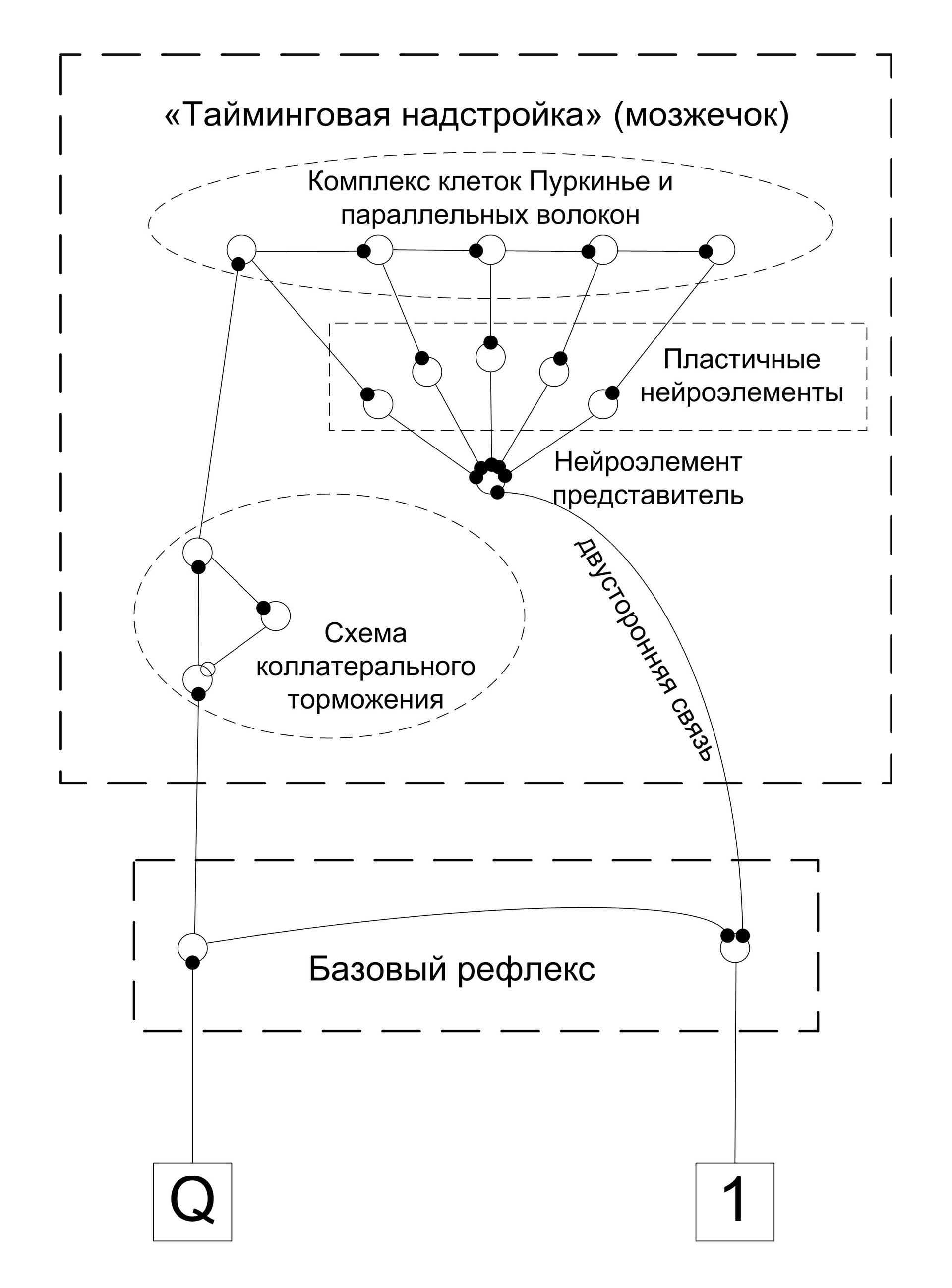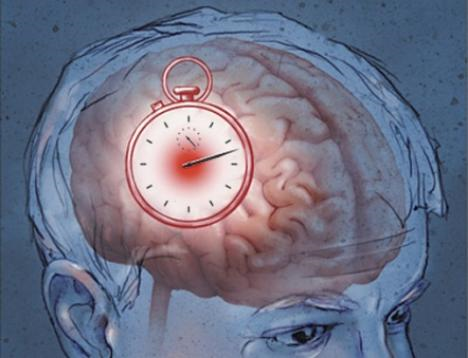Amazing cerebellum

What is surprising about the cerebellum? The department of the brain, which gave us the opportunity to enjoy the beauty and splendor of music, incredible precision and grace of dance movements.
Table of contents
1. Simulator of the nervous system. Part 1. Simple adder
2. Simulator of the nervous system. Part 2. Modulated Neuroelement
3. Simulator of the nervous system. Part 3. Associative Neuroelement
4. Memory, memory consolidation and grandmother's neurons
5. Modeling emotions or electronic sense of novelty
6. Amazing cerebellum
7. Structure and starting brain settings
The brain and the nervous system as a whole work with the same discrete signals, short pulses, the amplitude of which is the same and the way to control different organics is the change in the number of pulses per unit of time, i.e. frequency signal. Also, the degree of impact on the receptor is determined by the change in the frequency of the pulses.
')
Our propulsion system has the potential for very precise actions, smooth movements or precise movements of our limbs. In order to achieve this, the muscles that require high flexibility in control were divided into motor units. The motor unit is the motor neuron and its associated muscle fibers. And the more motor units are involved in the activity, the greater the force arises from muscle contraction. Also, the muscle fibers of various motor units are intertwined for the purpose of load distribution and field of action. Thus, it is possible to control the muscles not only due to the frequency of activation of motor units, but their total number involved in activity.

Imagine a simple reflex, for which the activation of its title leads to a complete contraction of the muscle. In this reflex, all motor units will be activated almost at the same time. But in the process of vital activity there may be a need, for example, to smoothly reduce, or plan to relax a muscle, or only smooth muscle relaxation is required, but then its rapid contraction.

In the simulated example, several reflexes lead to a different nature of the activation of a hypothetical muscle, given that each action indicator is a motor unit of one muscle. In the example, there is a main reflex, the activation of which leads to the simultaneous launch of all motor units. On the basis of this reflex, reflexes are created as if by a superstructure, which ensure the sequential activation or deactivation of motor units, which adds a certain time factor.
In the process of development, the animal learns to control its body, and training occurs not only in the form of creating associations, linking some events, but also the ratio of these events in time, and quite accurately. Of course, the spread of excitation along the reflex arc gives the time factor, but the mechanisms of reflex formation do not allow making this factor sufficiently accurate. In the nervous system there should be a mechanism allowing to memorize the time intervals between actions, and it is flexible enough for the possibility of retraining.
When developing the theory of the brain and studying the nervous system I was very surprised by the cerebellum, its features are very different from other brain structures. Firstly, this is the ratio of the size of the cerebellum and the functionality prescribed for it. The cerebellum occupies approximately 14% of the entire brain (for animals, the ratio will be in a big direction) and, as you know, serves to coordinate our body, and also performs some vegetative functions. At the same time, damage to the cerebellum causes a lack of coordination in the form of difficulty in maintaining balance, accuracy of movements, uneven handwriting, slow speech, etc. For the success of an animal, these functions are very important, but the dimensions of the cerebellum are larger, for example, than the Wernicke and Brock regions together, although these regions are responsible for human speech, that is, they perform more complex functionality with smaller sizes.
Secondly, in the cerebellum there are unusual forms of neurons - Purkinje cells. The dendrites of these cells branch strongly on one side of the cell nucleus, and they branch in the same plane. Such a cell shape must be due to something, usually the dendrites of neurons grow without strict orientation in planes.


Thirdly, the structure of the cerebellar cortex differs significantly from that of the neocortex. In the cerebellar cortex, there are only three layers: the molecular, the Purkinje cell layer and the granular layer. If in the process of evolution, the neocortex increased the number of its layers, then this did not occur in the cerebellum. Usually, evolution does not touch what works well and sufficiently performs its functionality. Given that the cerebellum appears evolutionarily quite early, one can say that the structure of its cortex is perfectly honed by the evolution under its function.

One of the peculiarities of the structure of the cerebellar cortex is the presence of parallel fibers - these are axons of grain cells (granular cells), which extend parallel to each other and perpendicular to the growth plane of the dendrites of Purkinje cells. It is possible that the shape of Purkinje cells is due to the fact that it increases the likelihood of contact between the parallel fiber and the dendrite of the Purkinje cell during their growth and development of the cortex. The Purkinje cell is a “trap cell” for growing parallel fibers.
It is known that the action potential has the form of a short impulse and spreads along the nervous tissue with a limited speed, approximately 1 m / s. This suggests the idea that the complex of parallel fibers and Purkinje cells is a kind of timer that is triggered by the activation of a granular cell, and the time intervals are counted by the sequential activation of Purkinje cells by the propagated action potential of parallel fibers.

Based on this assumption, a model was developed that represents a strong simplification of the structure of the cerebellum. Usually Purkinje cells have an inhibitory effect in the nuclei of the cerebellum, there are many inhibitory cells in the cortex itself, as well as liana-like fibers, but we will not take everything into account for the sake of simplification. The purpose of the model is to form an understanding of the principles of the cerebellum.
Imagine a simple reflex, an action on a single stimulus will occur. And we need to train the neural network so that this stimulus would not be a single response, but a series of answers with a certain rhythm. It is practically impossible to achieve this by the usual associative method Some kind of tool counting the time between events is needed. Such a tool is the timing superstructure, it is an analogue of the biological cerebellum.

At the heart of the timing superstructure is a sequentially connected chain of neuroelements. The signal that starts this chain passes through a collateral braking scheme, this scheme only passes a single signal, this is necessary so that there would be no interaction and competition between the chain elements. All changes that lead to learning occur in the synapses of plastic neurons, each plastic neuron has its own element in the scheme, which is analogous to the complex of Purkinje cells and parallel fibers.
When the activity of a plastic neuron coincides with a neuroelement representative of a part of the reflex arc, an increase in the strength and strengthening of the synapse connecting them occurs. If there is no match, there will be a decrease in strength. The rate of these changes depends on the measure of neuroplasticity of plastic neurons. Initially, the strength of the synapses of plastic neuroelements is not enough to activate a representative, only after a few consecutive coincidences, the action of the synapse will be enough to activate. After a few more repetitions, this position will be strengthened. Of course, we can control the speed of learning by changing the measure of plasticity in plastic neuroelements.
Now, if we repeat the reflex, activating the stimulus with the required rhythm, then after some time, with a single activation of the stimulus, we will get an answer in a learned rhythm.

In the example above, the rhythm is memorized. Of course, the rhythm can be set any. The scheme of the example is made on neuroelements which were described in earlier releases.
It can be concluded that the function of the cerebellum is the preservation in memory of short time intervals in various motor actions.
As can be seen from the examples of the work of the timing superstructure, it can work with only one motor unit, each motor unit requires its own complex. Having for each motor unit its own Purkinje cell chain, it is possible to learn not only to beat out rhythms, but also the nature of movements (smoothness, sharpness) by coordinating each motor unit in time.

There is an increase in the cerebellum in people whose activities are related to tasks where it is required to keep in memory the exact time intervals (timings) in motor actions. This is primarily musicians, dancers and athletes.
It can be noted that a significant number of cells are required for recording time intervals in memory, this causes a large relative size of the cerebellum. But the scheme chosen by evolution is aimed primarily at reliability and flexibility.
When creating fundamental models of the brain, there is no need to take into account all the schemes chosen by evolution, and it is possible to use a neuroelement that works like a whole complex of Purkinje cells and parallel fibers.
Source: https://habr.com/ru/post/397707/
All Articles